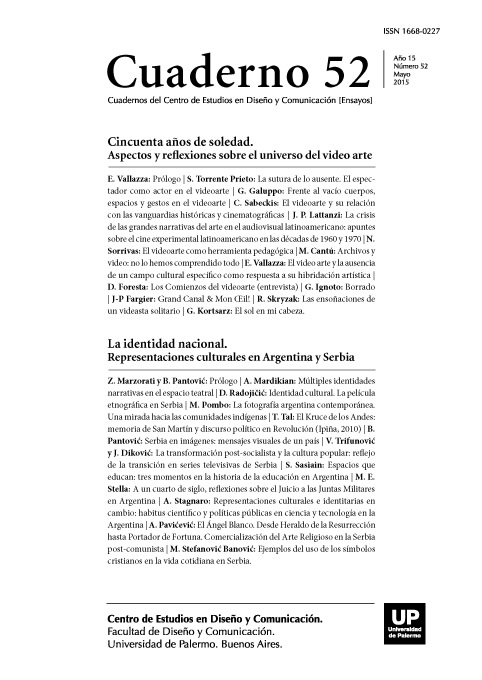Múltiples identidades narrativas en el espacio teatral
Abstract
Buenos Aires is one of the cultural capitals of the world. Official data show
that there are six official theaters, twelve private theaters and more than two hundred
commercial and independent theater spaces, of which more than seventy percent runs in
unconventional places. According to Antonio Gramsci, hegemony is an ideological structure, discursive, aesthetic that legitimizes the status quo, in a historic, political and cultural
context. Therefore, hegemony legitimate certain expressive ideologies and discourses over
others. Official and commercial circuits responds to a hegemonic theater model. However, theater productions and independent spaces are significant. It is necessary to reformulate the concept of ‘independent’ theater of Leonidas Barletta. Nowadays, the National
Theatre Institute, Proteatro and the National Art Foundation provide the funds for independent theater projects. Therefore, they carry a relative autonomy, governed by the laws
of selection of these institutions, becoming ‘alternative’ rather than ‘independent’. The off of the off theater arises as a spectral shape of the “alternative” circuit. These theaters are homes of directors and actors, warehouses or other places that do not meet the enabling
requirements for a theater. The aim of this paper is to describe and articulate critical thinking about the identity of the City theater space. The nodal point is the identity theory of Paul Ricoer who conceives personal identity as a narrative identity. The article hypothesis
rests on the following prediction: The ‘theater circuit’ can not be defined under the logic
of binary thinking. It is necessary to use the deconstructivist thought to reflect on the
current theater space.
References
ARTEI Asociación Argentina del Teatro Independiente. 8 de junio del 2012. Disponible en:
https://www.facebook.com/arteiteatros
Berman, M. (2010). El off. Primera Parte. Funámbulos, 32, 37/39.
Bordegaray, L. (2010). El off. Segunda Parte. Funámbulos, 32, 40/42.
Bourdieu, P. (1967). Campo Intelectual y Proyecto Creador. En: Povillon, J. y otros: Problemas de estructuralismo. México: Editorial Siglo XX.
Brook, P. (1973). El espacio vacío. Arte y técnica del teatro. Barcelona: Ediciones Península.
Derrida, J. (1995). Espectros de Marx. Madrid: Editorial Trotta.
Escena: Espacios Escénicos Autónomos. Recuperado Febrero 2012. Disponible en: http://
espaciosescenicosautonomos.blogspot.com/2011/01/contacto.html
Gramsci, A. (1983). Introducción a la filosofía de la praxis (Escritos dos). México: Premia
Editora.
Madedo, F. (2011). ¿Qué hacer con la actividad teatral? Montaje Decadente, 2, 23.
Ordáz, L. (1992). Leónidas Barletta: El hombre del teatro. Buenos Aires: Teatro del Pueblo.
Recuperado Febrero 2012. Disponible en: http://www.teatrodelpueblo.org.ar/dramatur
gia/ordaz003.htm
Pavis, P. (2000). El análisis de los espectáculos. Barcelona: Paidós.
Robin, R. (1996). Identidad, memoria y relato de sí mismo. Buenos Aires: Oficina de Publicaciones Ciclo Básico Común.
Sabadini, R.; Barbato Onofri, J. (2011). ¿Qué es escena? Buenos Aires: Alternativa Teatral
T.V N°16. Disponible en: http://www.alternativateatral.com/video1251-alternativa-teatral-tv-16-que-es-escena
Valente, M. (2011). El off del off. Buenos Aires: IPS (Inter Press Service). La conexión global. Recuperado Febrero 2012. Disponible en: http://ipsnoticias.net/nota.asp?idnews=975
Zizek, S. (2006). Visión de Paralaje. México: Fondo de Cultura Económica.
Los autores/as que publiquen en esta revista ceden los derechos de autor y de publicación a "Cuadernos del Centro de Estudios de Diseño y Comunicación", Aceptando el registro de su trabajo bajo una licencia de atribución de Creative Commons, que permite a terceros utilizar lo publicado siempre que de el crédito pertinente a los autores y a esta revista.


